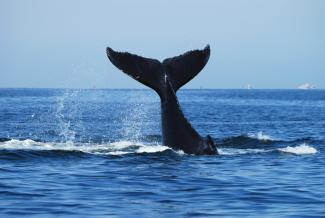
A young fisherman, balanced precariously on the prow of his tiny wooden boat as the waves threaten to send him plunging into the Pacific Ocean below, lazily extends a hand and points south: “They were here not long ago, but they went that way.” He is referring to the humpback whales which gather every year on Colombia’s El Chocó coastline to breed before continuing their journey south into colder waters. Our driver thanks him, expertly turns the boat in the direction the sea-worn hand points, and speeds away into the gathering black clouds.
This is the strange, almost surreal reality of life in the Chocó; a place where forty-tonne giants rule the ocean with only fishermen for company, where dense jungles mingle with black-sand beaches and the dark waters of the Pacific, and where teenaged soldiers huddle together in rain-soaked tents guarding the locals from the invisible threat of guerrillas, still out there somewhere in the impenetrable forest. The Chocó is the wettest lowland place on the planet, and the near-constant rain means time seems to slow down as the people wait patiently for the sun to break through. It is one of Colombia’s poorest and most dangerous regions, yet it possesses a sad and wild beauty.
A relatively popular holiday destination just twenty years ago, when Colombians would come to enjoy the abundant marine life, fresh seafood, and orchid-covered beaches, in 1993 the Chocó became enveloped in the country’s ongoing civil conflict, and a three-way battle between the armed forces, guerrilla organisations (the FARC [Revolutionary Armed
Forces of Colombia] and the ELN [Popular Liberation Army]) and paramilitary groups like the AUC (United Self-Defense Forces of Colombia) began. In only the last three years, it is estimated that as many as 50,000 Colombians have become displaced by the fighting which continues to this day. The once luxurious hotels and lodges were left abandoned to nature or their owners killed resisting the advancement of the guerrillas. The young soldiers posted along Guachalito beach are upbeat however when asked about their situation, despite the almost impossibly heavy rain they cradle their guns casually and whistle jovial greetings to passers-by.
Despite its many problems, the Chocó remains on the map for tourists desperate to catch a glimpse of its most famous residents, the whales which gather here every June-October to take advantage of its warm, safe waters. So many young humpbacks are born here in fact that a popular local joke is that “all whales are Colombian.” The lack of tourist infrastructure makes watching them an even more fulfilling experience, as a tiny boatload can share the water with nothing but pods of whales, leaping acrobatically skywards, and a few fishermen, so used to the presence of these creatures that they go about their daily business, rarely raising their heads.
However there is more to this nonchalance than meets the eye: not only does the region endure the violence of the internal conflict, the population suffers from one of the worst standards of living in the entire country. There have been reports of starvation, lack of clean water and a complete absence of basic infrastructure in many parts of the Chocó. The
fisherman are not simply immune to the charms of the whales, many cannot afford to relax from their work for even a minute.
The whole region feels isolated from the rest of Colombia: lack of roads means the only access to this coastline is by irregular flights. As our plane circles over the jungle and approaches the landing strip, I am ‘comforted’ by the sight of a similarly tiny aircraft, blackened and destroyed, parked by the ‘terminal’. The town of Nuqui, one gateway to the ecolodges serving most travellers, is a remote and poor place; speeding along the sandbag and soldier-lined mangrove swamp linking it with the coast puts one in mind of a Vietnam War film instead of a picturesque paradise.
Yet, ironically, this is exactly what the Chocó is; despite its many problems, it is a place of astonishing beauty. The rain-soaked rocks, wind-swept palms, and wildlife-rich jungles may not attract the crowds which flock to Colombia’s Caribbean coast, but they have a romance and wildness absent from the calm blue waters further north.
Back in the present, as our boat returns home, fleeing the oncoming storm and a depressing absence of whales, we pass the same fishermen, still stoically reeling and casting. Our driver once again shouts to them for guidance: the same man, accompanied by raucous laughter from his companions, amused perhaps by the wet, shivering gringos in the opposite boat, replies: “They’ll come back eventually, they always do,” he says, and returns to his work, as the ocean swells beneath him, and the mist slowly envelopes the jungle behind.
Have you ever seen any amazing animals in the wild?
